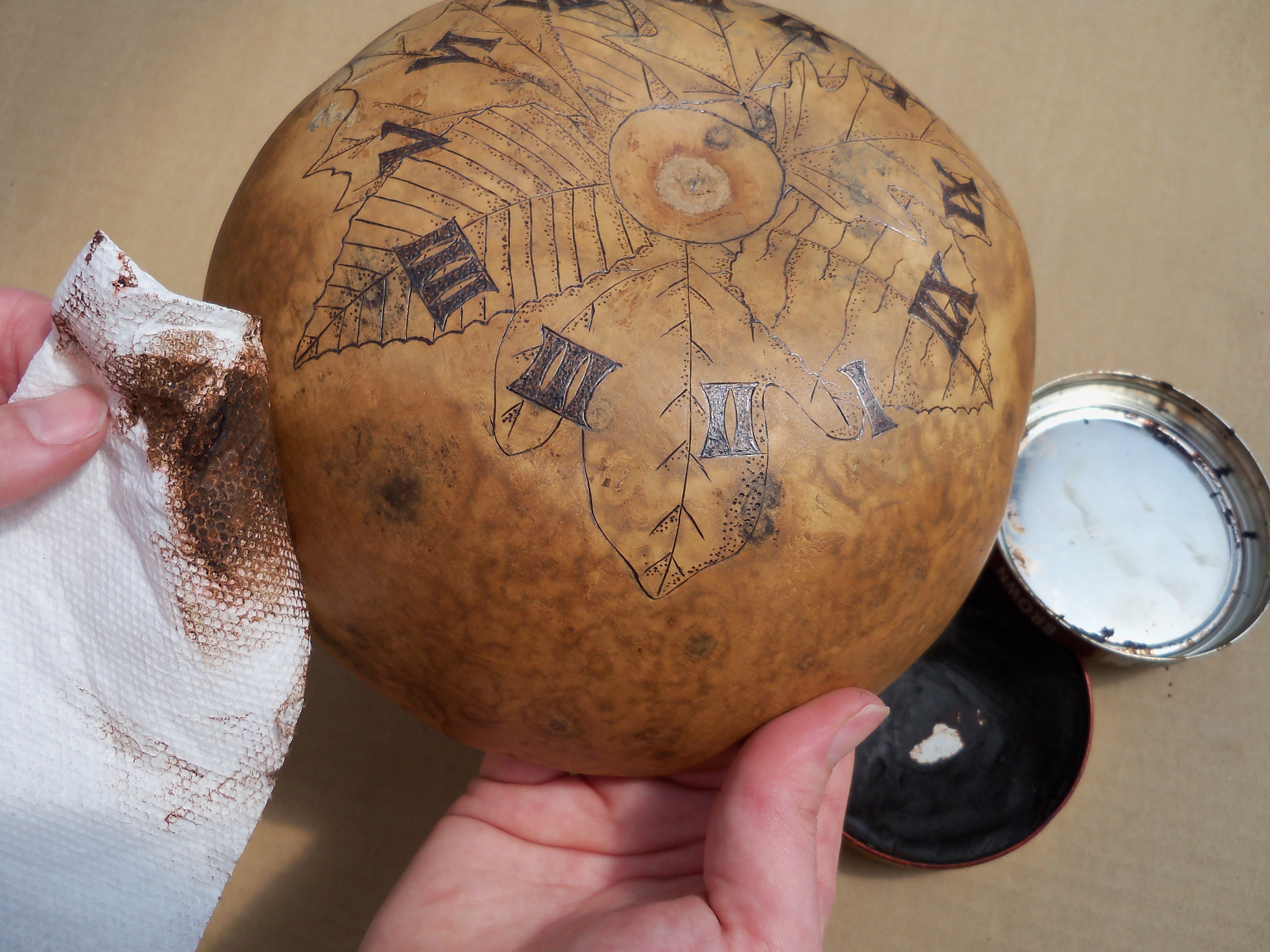I discovered the art of gourd crafting when I was 10 years old and was captivated by how many wonderfully creative things I could make out of gourds.
As I continued to work with gourds I learned another fascinating thing about them. I am able to use pretty much any artistic technique on them from painting, to carving, to wood burning (often called pyroengraving), to beading, to weaving, and so on. I like to refer to gourds as nature’s pottery with endless possibilities!
In this step-by-step project I’ll show you how to make a working gourd clock with a realistic woodburned leaf design.
After collecting various leaves from outside I drew a picture with them. You can make your own leaf picture this way or use the one I made.
Be sure to watch my gourd crafting videos to complete the first couple of steps of this project. I show you how to clean a dried gourd both outside and inside.
























